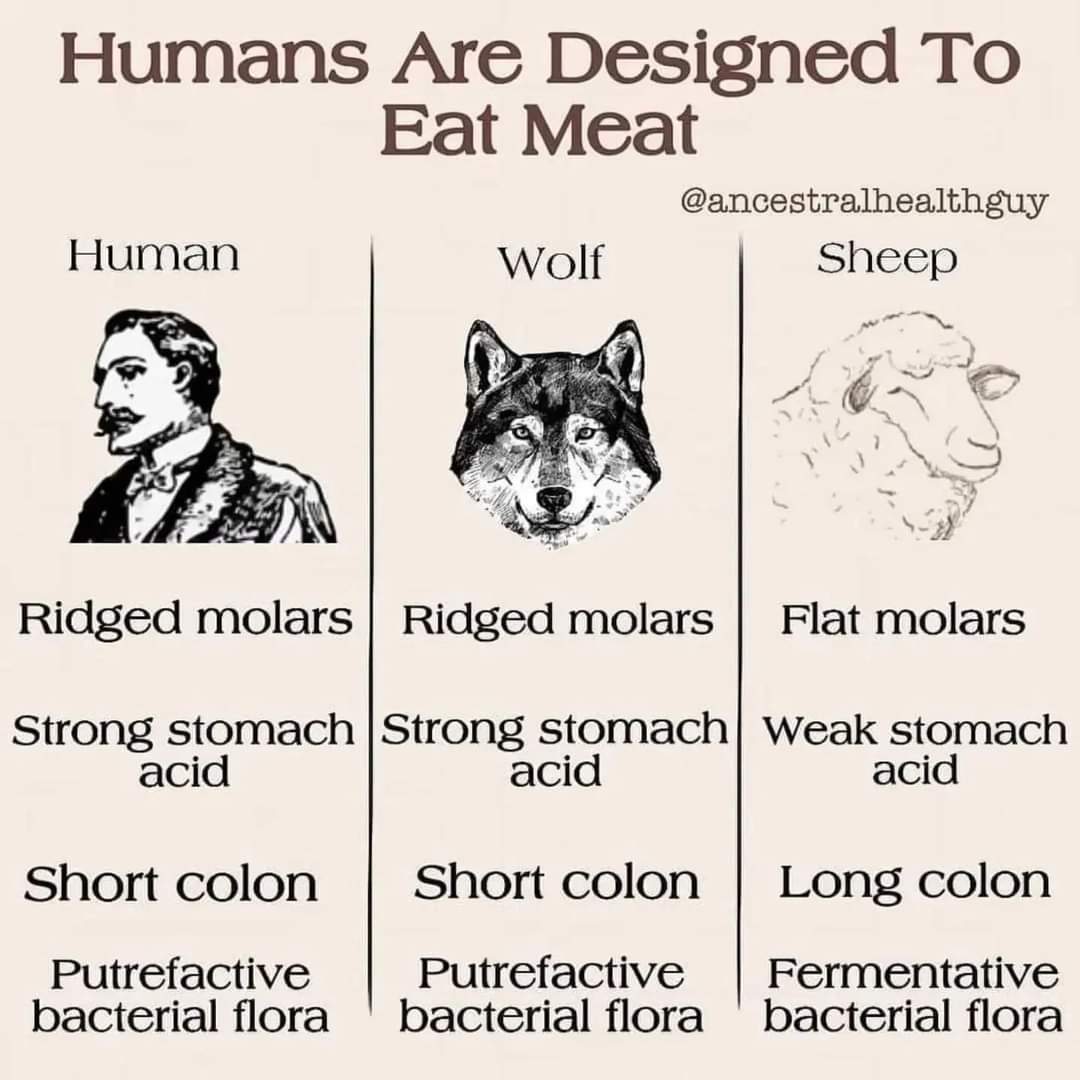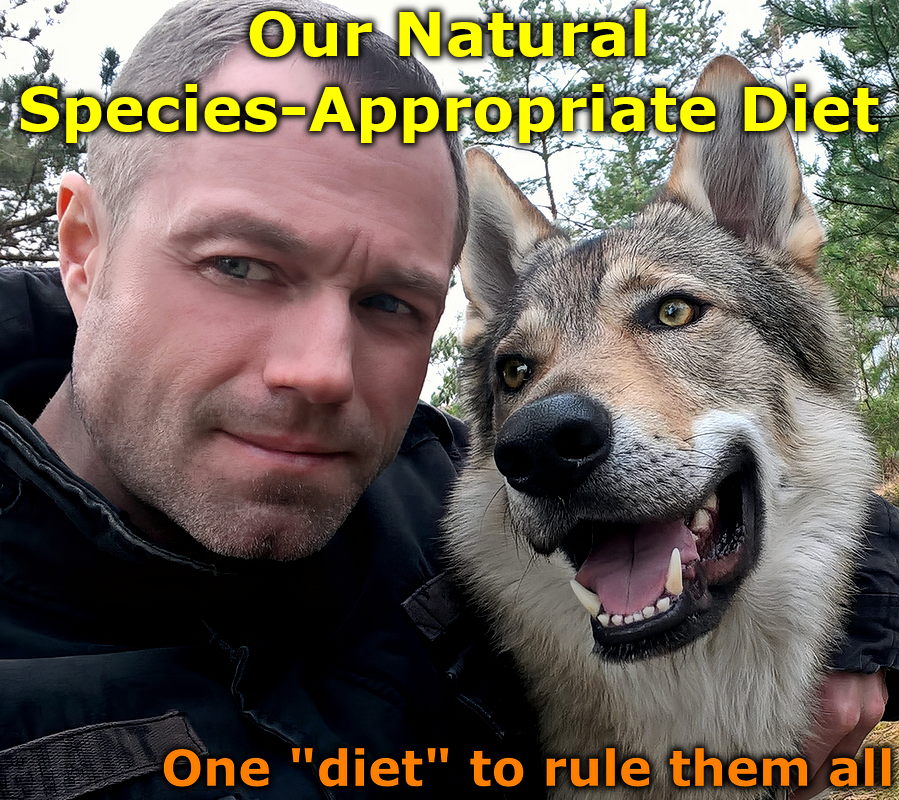When discussing nutrition and various diets, I often get the comment, “there is no diet that fits everyone”, and, “each individual needs to find what works for them”.
If that’s your stance on nutrition, then answer the following questions, and please take your time.
Our genes and gene expressions, our organ systems, our digestive system, our stomach acid pH (just as low as common scavengers), our metabolic and methylation pathways and how little we as a species have developed in these areas during the last 350 000 years is very well documented. Do you think all of this changed significantly in the last couple of hundred years due to modern agriculture?
By studying (anthropology) what we as a species have consumed during these 350 000 years (using isotopes of nitrogen (N14/N15 testing)) and reviewing all literature, it’s fully clear that humans are obligate hyper carnivores. Our entire heritage is based on animal-based nutrition – with the ability to survive for short periods of time on plant-based foods (depending on nutritional stores). All the research, all the testing and all the science tells us that whenever there were plenty of animals around, that was all that we consumed – so we could thrive, develop and multiply. When animals were scarce, we compensated with plant-based foods just to get enough energy and survive. Do you think that our genes and physiology suddenly changed in a couple of years to turn all this on its head?
The answer to those two questions are; of course not.
And if we look to biology and biochemistry, we know that animal-based nutrition is the only way to get fully bioavailable nutrition, including more than 20 nutrients that are not even present in plant-based foods. In other words, the perfect species appropriate diet for humans are animal-based/carnivore. It doesn’t matter what you think or believe, this is simply science and facts are facts. Animal nutrition is what we are coded for, it’s in our DNA. And once we get back to consuming what we are made for, our bodies can heal and our gut flora will adjust within a few weeks. If you thought you did fine before, you will be surprised by how much better you feel and perform when following your species appropriate diet.
You can add in plant-based foods if you like (for taste and/or texture), but it will severely decrease the quality of the meal. Doing 70 % carnivore will still be better than almost any other popular diet, and even a 50/50 animal to plant-based diet will be better than any modern “balanced” diet with Frankenstein foods and vegetable (seed) oils – but it will still be a far cry from 95 to 100 % carnivore.
So, for health, well-being and longevity, there actually is one best diet to rule them all, and that is our natural species appropriate diet – animal-based nutrition.

Functional And Structural Comparison of Man’s Digestive Tract With That Of a Wolf And a Sheep
| MAN | WOLF | SHEEP | |
| TEETH | |||
| incisors | both jaws | both jaws | lower jaw only |
| molars | ridged | ridged | flat |
| canines | small | large | absent |
| JAW | |||
| movements | vertical | vertical | rotary |
| function | tearing-crushing | tearing-crushing | grinding |
| mastication | unimportant | unimportant | vital function |
| rumination | never | never | vital function |
| STOMACH | |||
| capacity | 4 pints | 4 pints | 8 1/2 gallons |
| emptying time | 3 hours | 3 hours | never empties |
| inter digestive rest | yes | yes | no |
| bacteria present | no | no | yes – vital |
| protozoa present | no | no | yes – vital |
| gastric acidity | strong | strong | weak |
| cellulose digestion | none | none | 70% – vital |
| digestive activity | weak | weak | vital function |
| COLON AND CAECUM | |||
| size of colon | Short – small | Short – small | Long – capacious |
| size of caecum | tiny | tiny | Long – capacious |
| function of caecum | none | none | vital function |
| appendix | vestigial | absent | cecum |
| rectum | small | small | capacious |
| digestive activity | none | none | vital function |
| cellulose digestion | none | none | 30% – vital |
| bacterial flora | putrefactive | putrefactive | fermentative |
| food absorbed from | none | none | vital function |
| volume of feces | small – firm | small – firm | voluminous |
| gross food in feces | rare | rare | large amount |
| GALLBLADDER | |||
| size | well-developed | well-developed | often absent |
| function | strong | strong | weak or absent |
| DIGESTIVE ACTIVITY | |||
| from pancreas | solely | solely | partial |
| from bacteria | none | none | partial |
| from protozoa | none | none | partial |
| digestive efficiency | 100% | 100% | 50% or less |
| FEEDING HABITS | |||
| frequency | intermittent | intermittent | continuous |
| SURVIVAL WITHOUT | |||
| stomach colon and cecum | possible / possible | possible / possible | impossible / impossible |
| microorganisms | possible | possible | impossible |
| animal protein | impossible | impossible | possible |
| RATIO OF BODY LENGTH TO | |||
| entire digestive tract small intestine | 1:5 1:4 | 1:7 1:6 | 1:27 1:25 |
